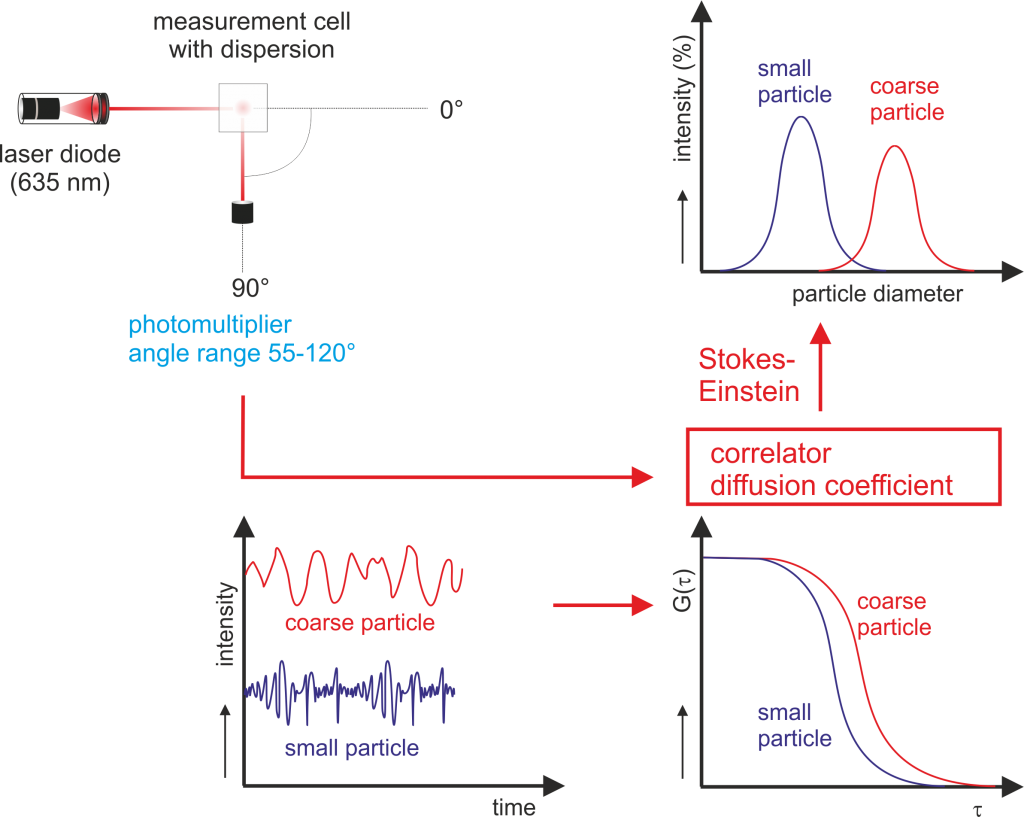
#DYNAMIC LIGHT SCATTERING MATHEMATICS ISO#
Compliance with regulatory standards ISO 13321, ISO 22412, 21 CFR Part 11. Dynamic light scattering (DLS) is a technique in physics that can be used to determine the size distribution profile of small particles in suspension or.Despite the name, this last alternative is really a form of microscopy. At-line process systems available for control of nanoparticle manufacture. spectroscopy (FCS), forced Rayleigh scattering (FRS), pulsed field gradient NMR (PFGNMR) or the related diffusion ordered spectroscopy (DOSY), particle tracking (PT), and differential dynamic light scattering (DDLS).
 Low volume requirement (as little as 3µL). Size measurement of molecules from MW < 1000Da. Dynamic Light Scattering (DLS) is an efficient method of measurement employed for calculating the hydrodynamic size of common nanomaterials consisting of nanoparticles, colloids, polymers and proteins. Simple or no sample preparation, high concentration, turbid samples can be measured directly using NIBS. Mean size only requires knowledge of the viscosity of the liquid. Simple, material independent measurement of per peak particle concentration. Multi-Angle Dynamic Light Scattering (MADLS®) improves the resolution of DLS and provides angular independent size results. Accurate, reliable and repeatable particle size analysis in one or two minutes. Dynamic light scattering (DLS) is a technique that can be used to determine the size distribution of small particles in suspension or macromelecules in. Analysis of these intensity fluctuations yields the velocity of the Brownian motion and hence the particle size using the Stokes-Einstein relationship.ĭynamic Light Scattering technology from Malvern Panalytical offers the following advantages: The Brownian motion of particles or molecules in suspension causes laser light to be scattered at different intensities. hard sphere, globular, dendrimer, chain stiffness, and degree of branching).Typical applications of dynamic light scattering are the characterization of particles, emulsions or molecules which have been dispersed or dissolved in a liquid. Hydrodynamic sizes are more easily measured than radii of gyration and can be measured over a wider range of sizes. The conversion from hydrodynamic radius to radius of gyration is a function of chain architecture (including questions of random coil vs. The hydrodynamic radius is not the same as the radius of gyration. Radius calculations are the same except for a factor of two.Īlso, a note to those interested in polymer size. That is, the determined particle size is the size of a sphere that diffuses the way as your particle.įor those who work with protein sizing and other areas where hydrodynamic radius is more commonly used, note that the development here is around diameter. Finally, and most importantly, it reminds the analyst that the particle size determined by dynamic light scattering is the hydrodynamic size. Temperature is even more important due to the viscosity term since viscosity is a stiff function of temperature.
Low volume requirement (as little as 3µL). Size measurement of molecules from MW < 1000Da. Dynamic Light Scattering (DLS) is an efficient method of measurement employed for calculating the hydrodynamic size of common nanomaterials consisting of nanoparticles, colloids, polymers and proteins. Simple or no sample preparation, high concentration, turbid samples can be measured directly using NIBS. Mean size only requires knowledge of the viscosity of the liquid. Simple, material independent measurement of per peak particle concentration. Multi-Angle Dynamic Light Scattering (MADLS®) improves the resolution of DLS and provides angular independent size results. Accurate, reliable and repeatable particle size analysis in one or two minutes. Dynamic light scattering (DLS) is a technique that can be used to determine the size distribution of small particles in suspension or macromelecules in. Analysis of these intensity fluctuations yields the velocity of the Brownian motion and hence the particle size using the Stokes-Einstein relationship.ĭynamic Light Scattering technology from Malvern Panalytical offers the following advantages: The Brownian motion of particles or molecules in suspension causes laser light to be scattered at different intensities. hard sphere, globular, dendrimer, chain stiffness, and degree of branching).Typical applications of dynamic light scattering are the characterization of particles, emulsions or molecules which have been dispersed or dissolved in a liquid. Hydrodynamic sizes are more easily measured than radii of gyration and can be measured over a wider range of sizes. The conversion from hydrodynamic radius to radius of gyration is a function of chain architecture (including questions of random coil vs. The hydrodynamic radius is not the same as the radius of gyration. Radius calculations are the same except for a factor of two.Īlso, a note to those interested in polymer size. That is, the determined particle size is the size of a sphere that diffuses the way as your particle.įor those who work with protein sizing and other areas where hydrodynamic radius is more commonly used, note that the development here is around diameter. Finally, and most importantly, it reminds the analyst that the particle size determined by dynamic light scattering is the hydrodynamic size. Temperature is even more important due to the viscosity term since viscosity is a stiff function of temperature. 
The first is that sample temperature is important, at it appears directly in the equation. However, the equation does serve as important reminder about a few points. The calculations are handled by instrument software. T is thermodynamic temperature (we control this).k B is Boltzmann’s constant (we know this).D t is the translational diffusion coefficient (we find this by dynamic light scattering) Dynamic light scattering (also known as Photon Correlation Spectroscopy) is a powerful technique in physics, which can be used to determine the size.D h is the hydrodynamic diameter (this is the goal: particle size!) We consider dynamic light scattering (DLS) by non-ergodic media, such as glasses or gels, in which the scattering elements are able only to make limited.






 0 kommentar(er)
0 kommentar(er)
